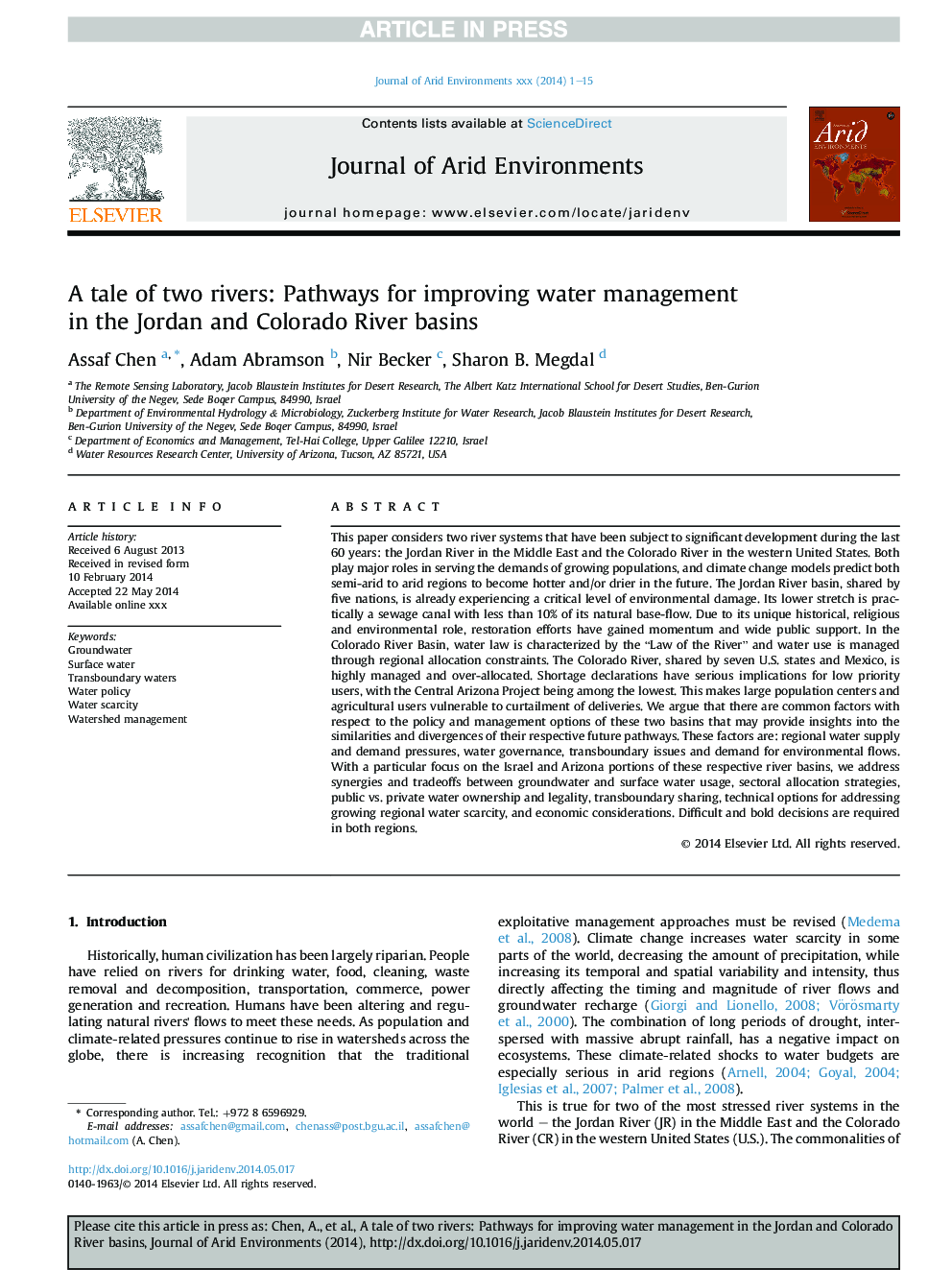| Article ID | Journal | Published Year | Pages | File Type |
|---|---|---|---|---|
| 6303449 | Journal of Arid Environments | 2015 | 15 Pages |
Abstract
This paper considers two river systems that have been subject to significant development during the last 60 years: the Jordan River in the Middle East and the Colorado River in the western United States. Both play major roles in serving the demands of growing populations, and climate change models predict both semi-arid to arid regions to become hotter and/or drier in the future. The Jordan River basin, shared by five nations, is already experiencing a critical level of environmental damage. Its lower stretch is practically a sewage canal with less than 10% of its natural base-flow. Due to its unique historical, religious and environmental role, restoration efforts have gained momentum and wide public support. In the Colorado River Basin, water law is characterized by the “Law of the River” and water use is managed through regional allocation constraints. The Colorado River, shared by seven U.S. states and Mexico, is highly managed and over-allocated. Shortage declarations have serious implications for low priority users, with the Central Arizona Project being among the lowest. This makes large population centers and agricultural users vulnerable to curtailment of deliveries. We argue that there are common factors with respect to the policy and management options of these two basins that may provide insights into the similarities and divergences of their respective future pathways. These factors are: regional water supply and demand pressures, water governance, transboundary issues and demand for environmental flows. With a particular focus on the Israel and Arizona portions of these respective river basins, we address synergies and tradeoffs between groundwater and surface water usage, sectoral allocation strategies, public vs. private water ownership and legality, transboundary sharing, technical options for addressing growing regional water scarcity, and economic considerations. Difficult and bold decisions are required in both regions.
Related Topics
Physical Sciences and Engineering
Earth and Planetary Sciences
Earth-Surface Processes
Authors
Assaf Chen, Adam Abramson, Nir Becker, Sharon B. Megdal,
